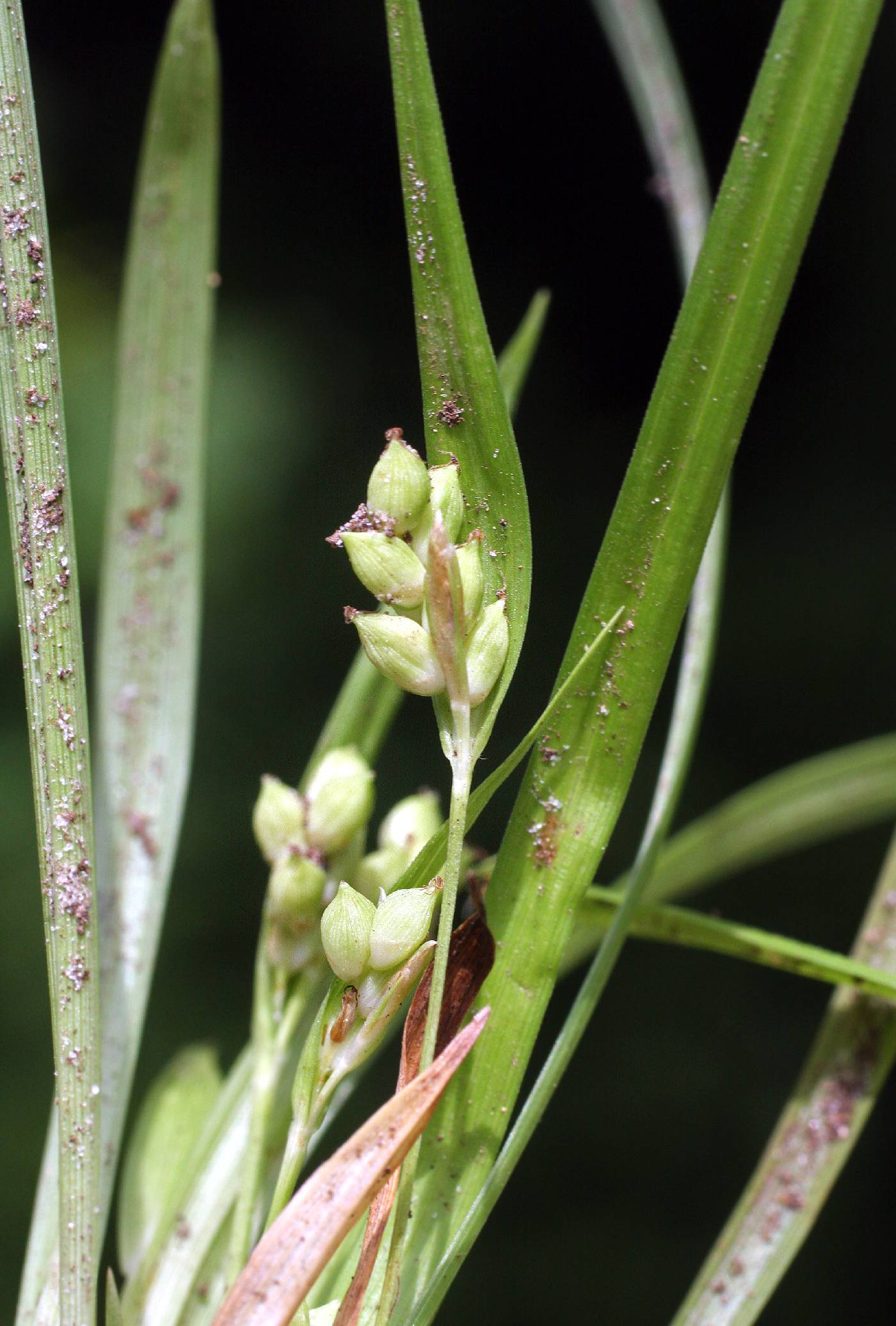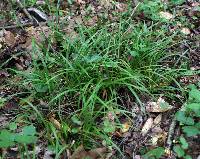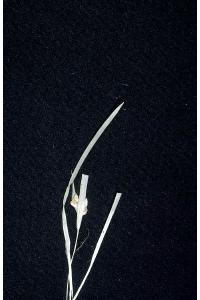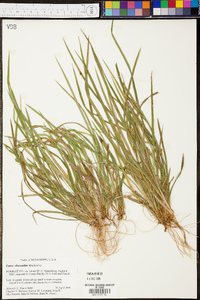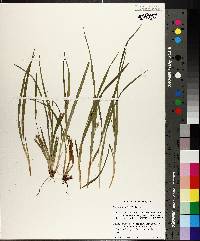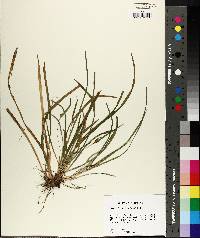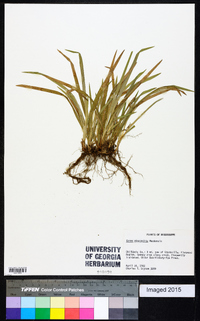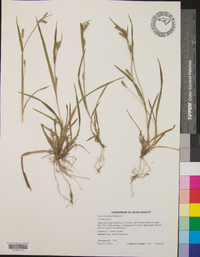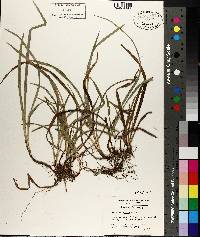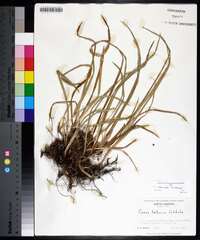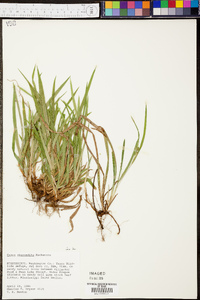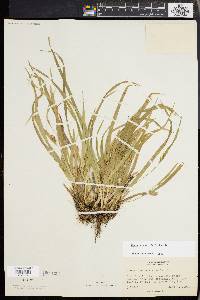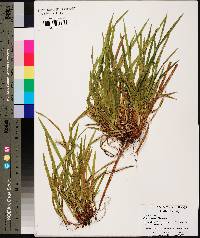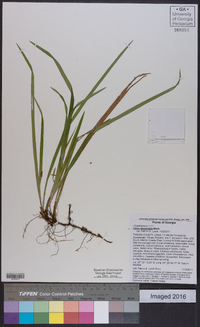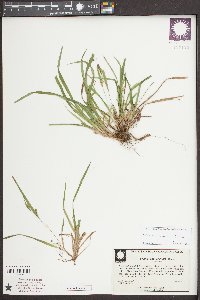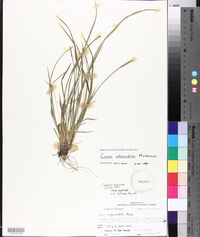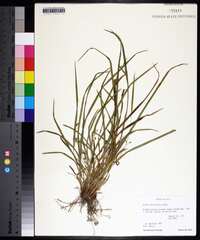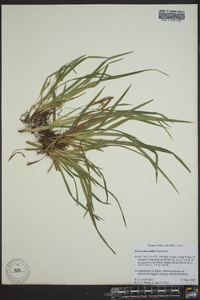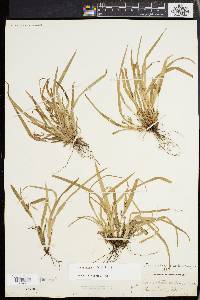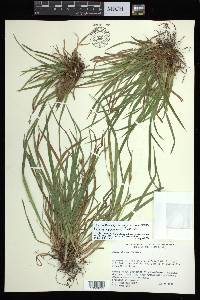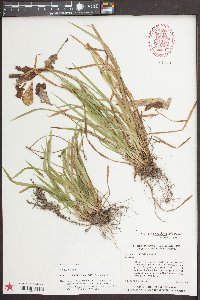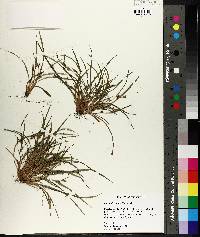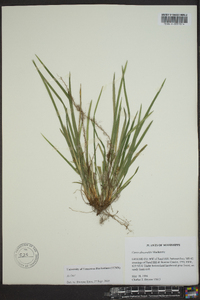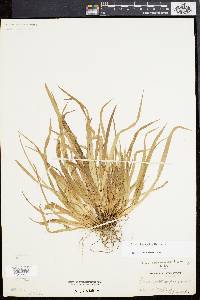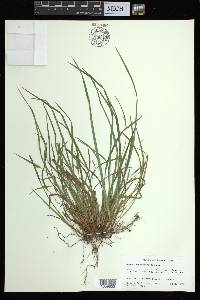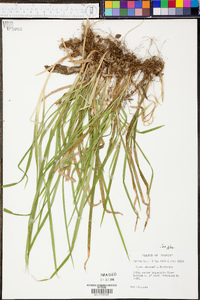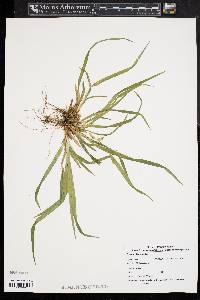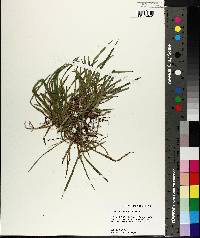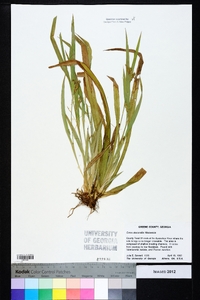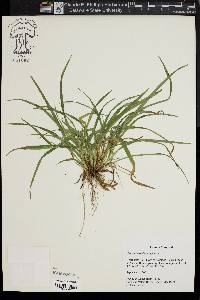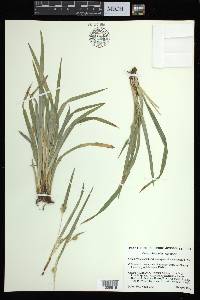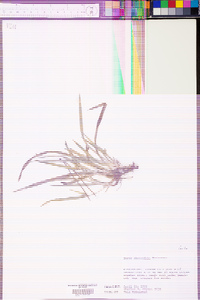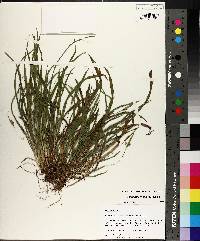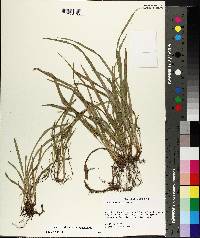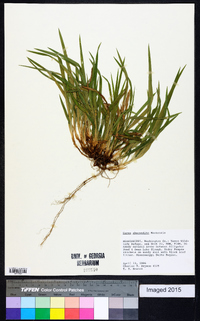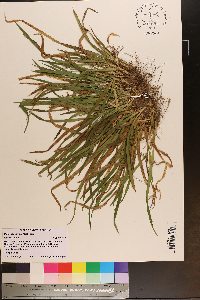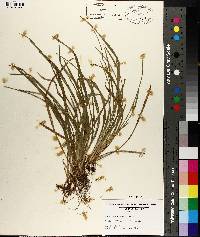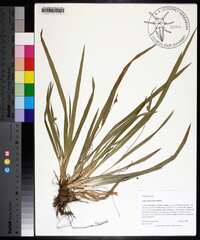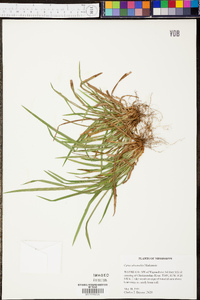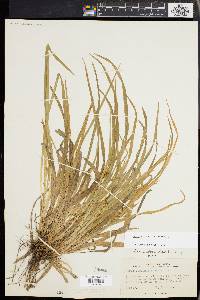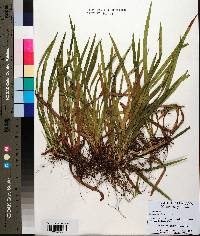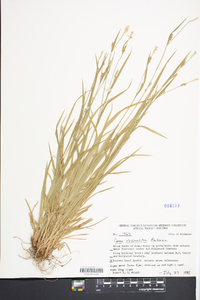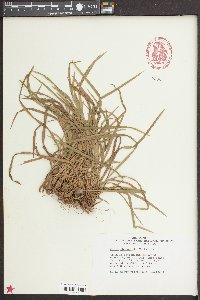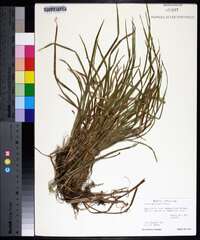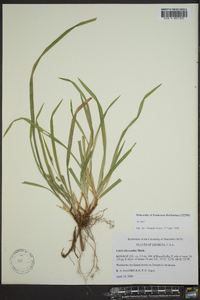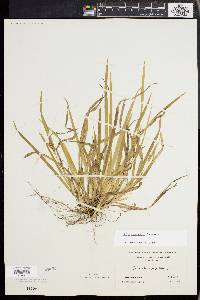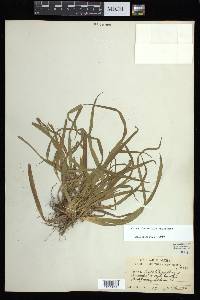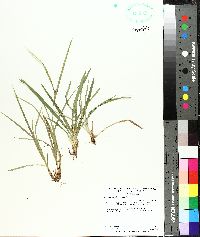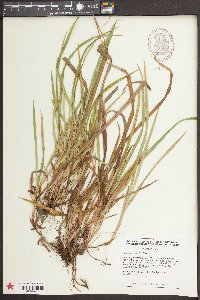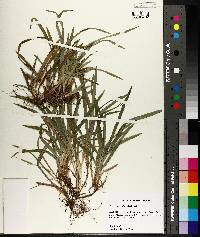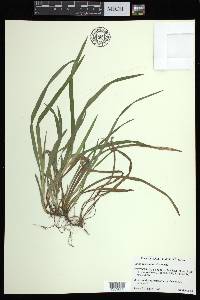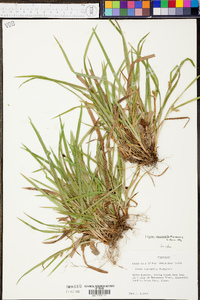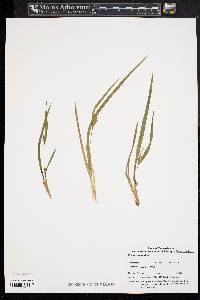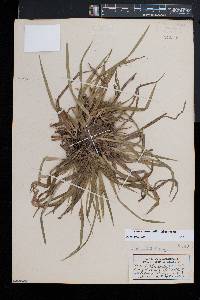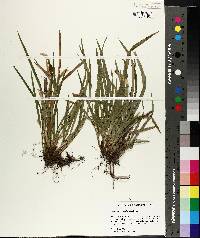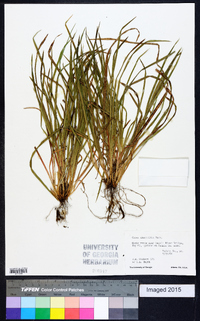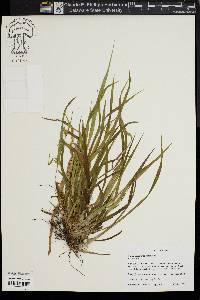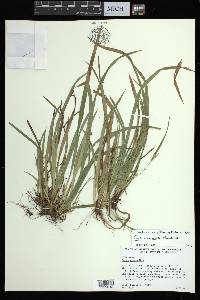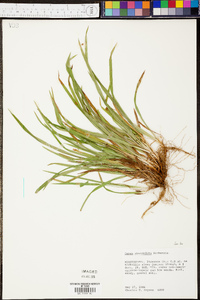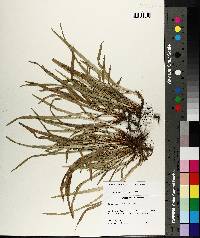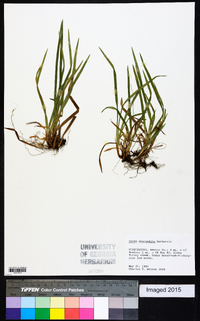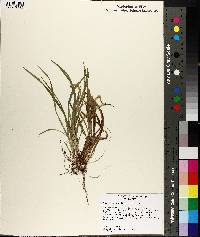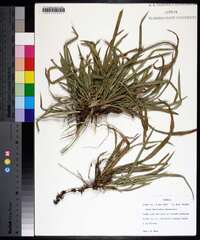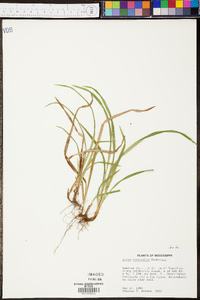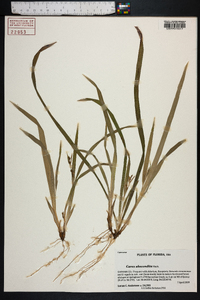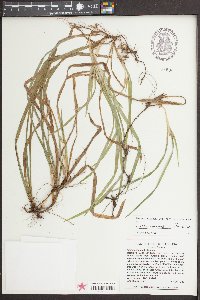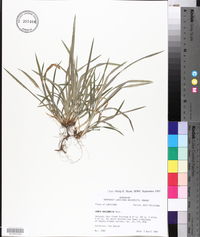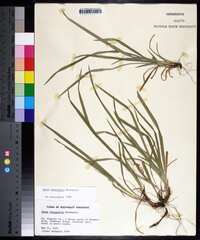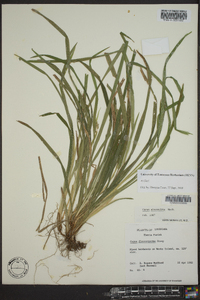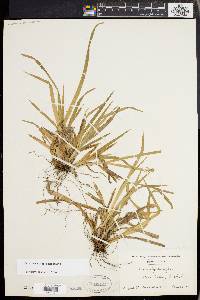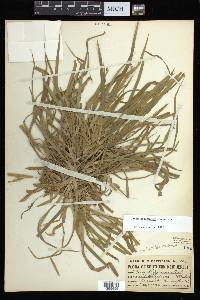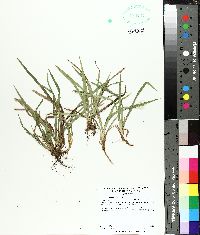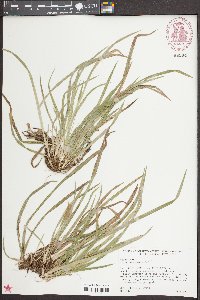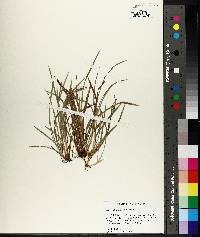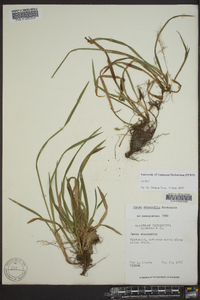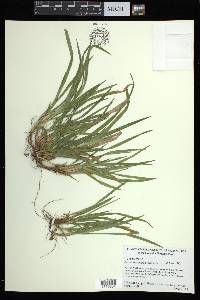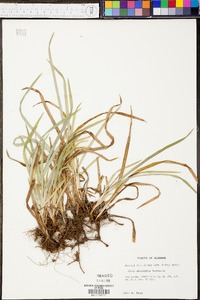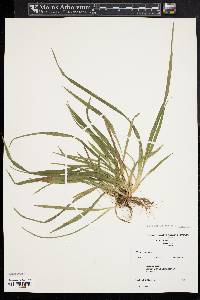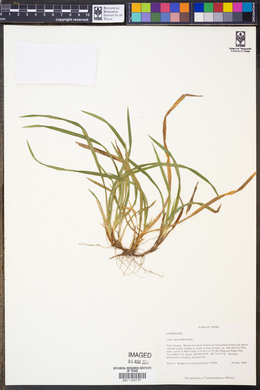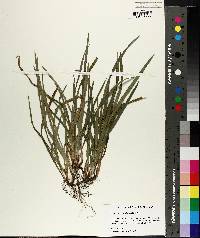Carex abscondita
|
|
|
|
Family: Cyperaceae
Thicket Sedge
[Carex digitalis var. glauca] |
Plants loosely or densely cespitose. Culms erect or ascending, 7-30 cm × 0.2-0.5 mm; vegetative shoots taller than culms, (1.4-)1.7-3.7(-4.9) times as tall as tallest flowering culm, blades of vegetative shoots 1-3.5 times wider than bract blades. Leaves: basal sheaths white to light brown; nonbasal sheaths 1-4 mm; blades erect, drooping or recurved, dark green to grayish blue-green, 11-38 cm × 3-9 mm, usually exceeding culms. Inflorescences: spikes (3-)4 per culm, scattered; peduncles of proximal pistillate spikes erect, 3-15 mm; bracts dark green to glaucous, 1-10.5 cm × 1.5-4 mm, well developed, blade of distal lateral spike 5.6-17(-26) times as long as wide. Pistillate spikes: proximal usually basal, proximal spikes on usually erect peduncles, distal sessile to very short-pedunculate, 6-12 × 3.5-6 mm, often hidden in foliage. Staminate spike sessile or nearly so, (3.5-)4.5-10.2(-11.5) × 0.6-1.4(-1.6) mm, often hidden by distal bract and/or pistillate spikes. Pistillate scales 1.5-2 × 0.8-1 mm, midribs green, margins hyaline, apex acute, proximal scales of lateral spikes subtending perigynia. Staminate scales 2.6-3.6(-3.8) × 0.8-1 mm, midribs green, margins hyaline, apex obtuse. Anthers 1.2-1.8 mm. Perigynia (3-)8-13 per spike, spirally overlapping, finely veined, obovoid, 2.8-4.2 × 1.4-2 mm; beak tapering. Achenes ellipsoid, 2.6-4 × 1.2-1.8 mm, sides flat at maturity, filling perigynia. Style short, tapering from swelling just beyond attachment to achene, bent, ascending through entire orifice. Fruiting summer. Rich, moist, wet slopes or bottomlands, deciduous or mixed deciduous-evergreen forests, on or just above flood plain of streams and rivers; 0-600 m; Ala., Ark., Conn., Del., D.C., Fla., Ga., Ky., La., Md., Mass., Miss., Mo., N.J., N.Y., N.C., Okla., Pa., R.I., S.C., Tenn., Tex., Va. Loosely tufted, seldom also with long rhizomes; fertile stems 0.5-2.5 dm, minutely hispidulous, much surpassed by the lvs; basal sheaths white to light brown; lvs roughened on the margins and toward the apex on the veins, those of the sterile shoots 3-9 mm wide, of the fertile ones 1.5-4 mm wide; terminal spike staminate, 0.5-1.2 cm, sessile or nearly so, often ±hidden by the bracts and pistillate spikes; pistillate spikes 2 or 3, 0.6-1.2 cm, often hidden in the foliage, the upper sessile or nearly so, the lowermost one usually basal, on a peduncle to 1.5 cm; pistillate scales acute; perigynia 3-9, overlapping, 2.8-4.2 mm, finely many-nerved as well as 2-ribbed, evidently trigonous, short-ellipsoid, rather abruptly narrowed to a short, slightly oblique beak with entire orifice; achene trigonous. Moist to wet woods and swamps; n. Fla. to La., n. to s. Ark., s. Ind., Va., and (mainly near the coast) Mass. (C. ptychocarpa, a preoccupied name) Gleason, Henry A. & Cronquist, Arthur J. 1991. Manual of vascular plants of northeastern United States and adjacent Canada. lxxv + 910 pp. ©The New York Botanical Garden. All rights reserved. Used by permission. |

